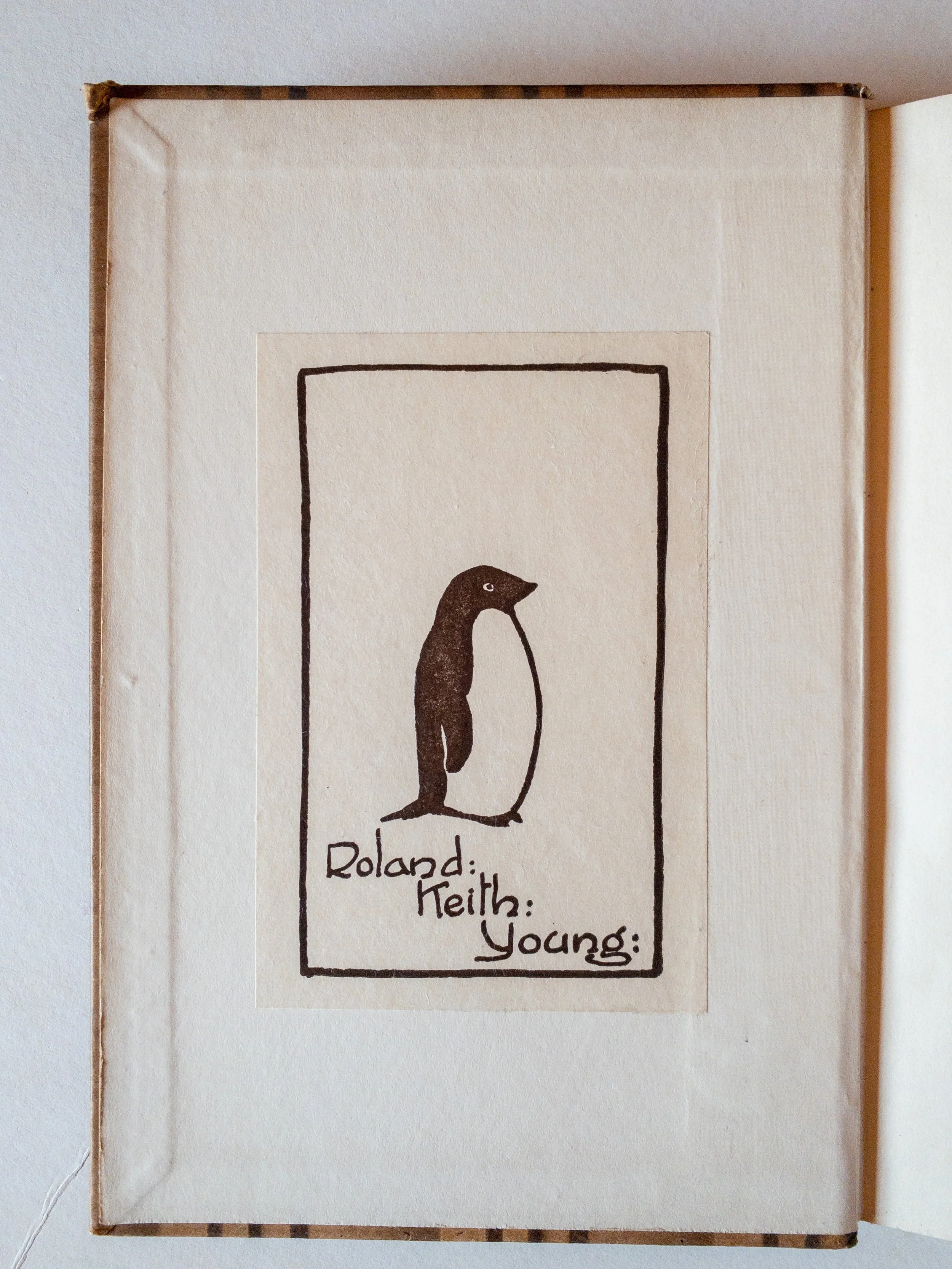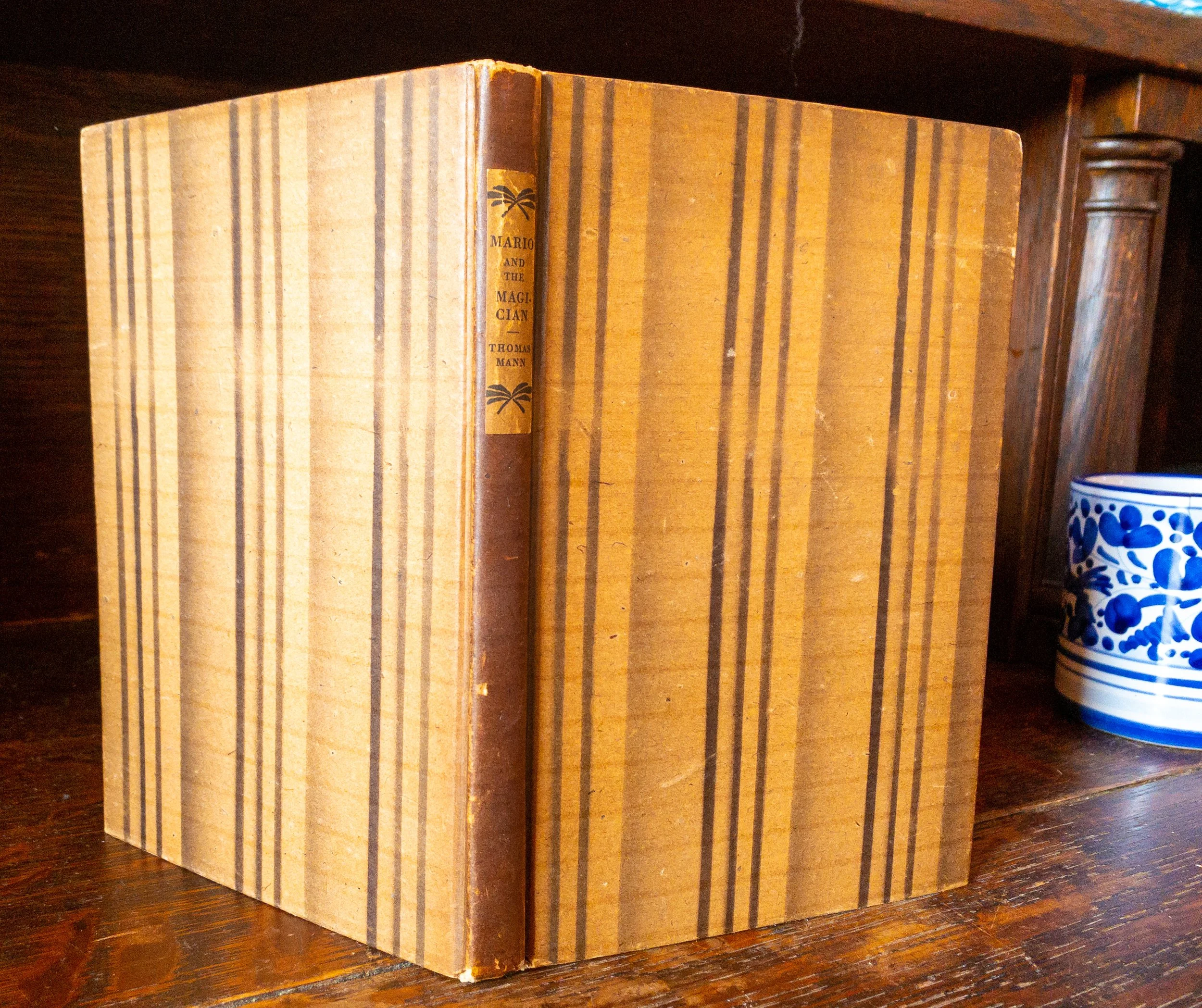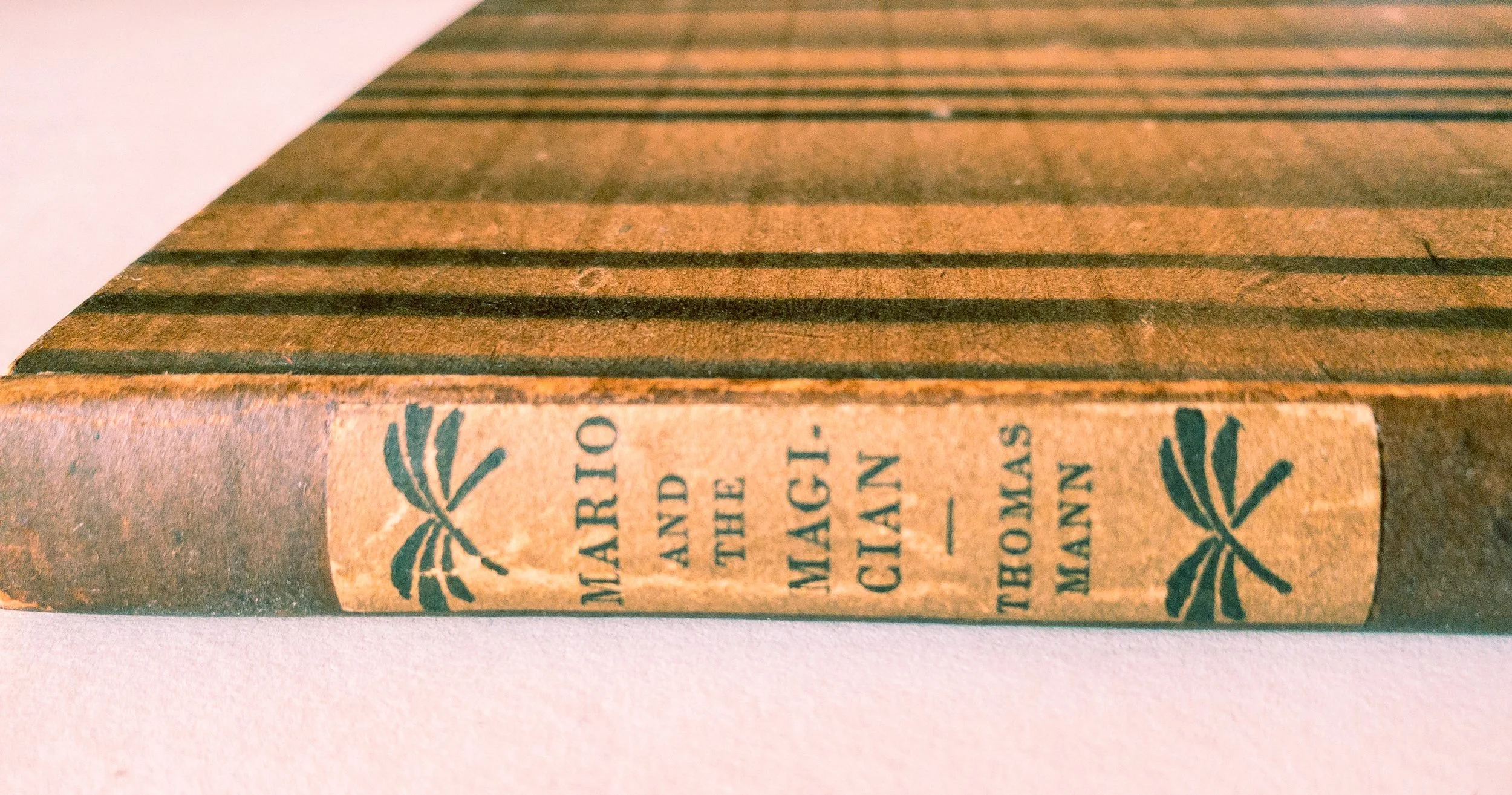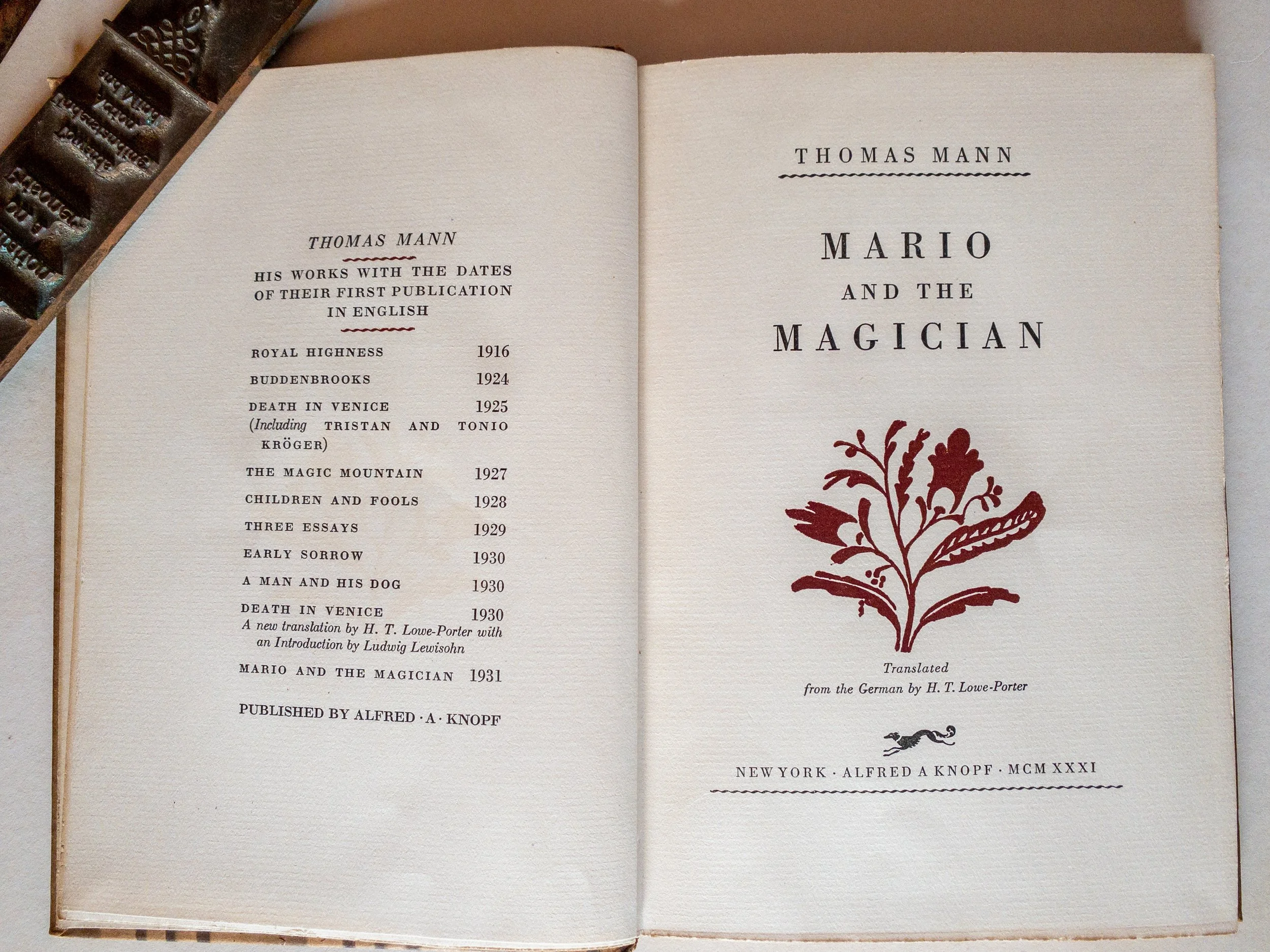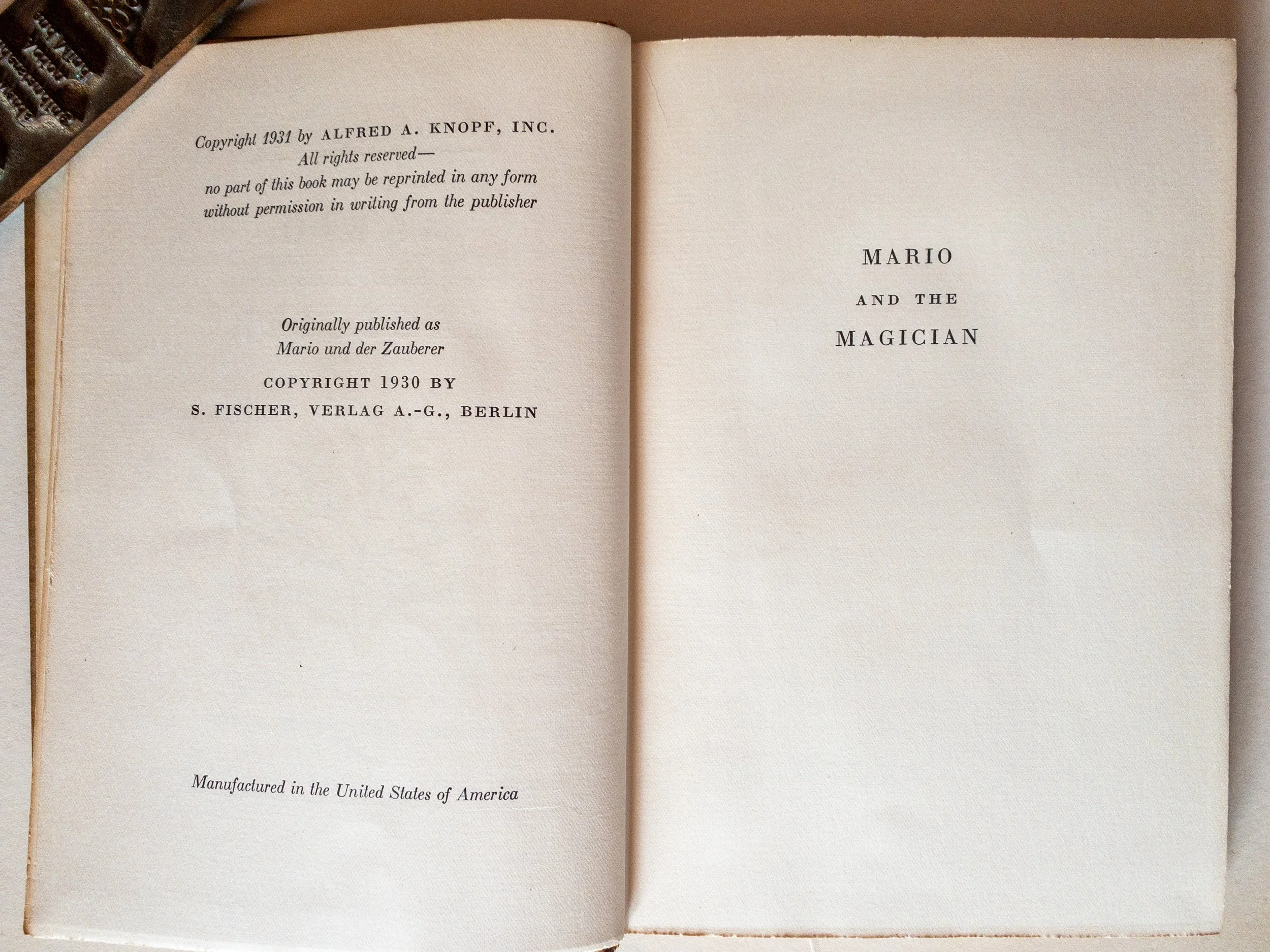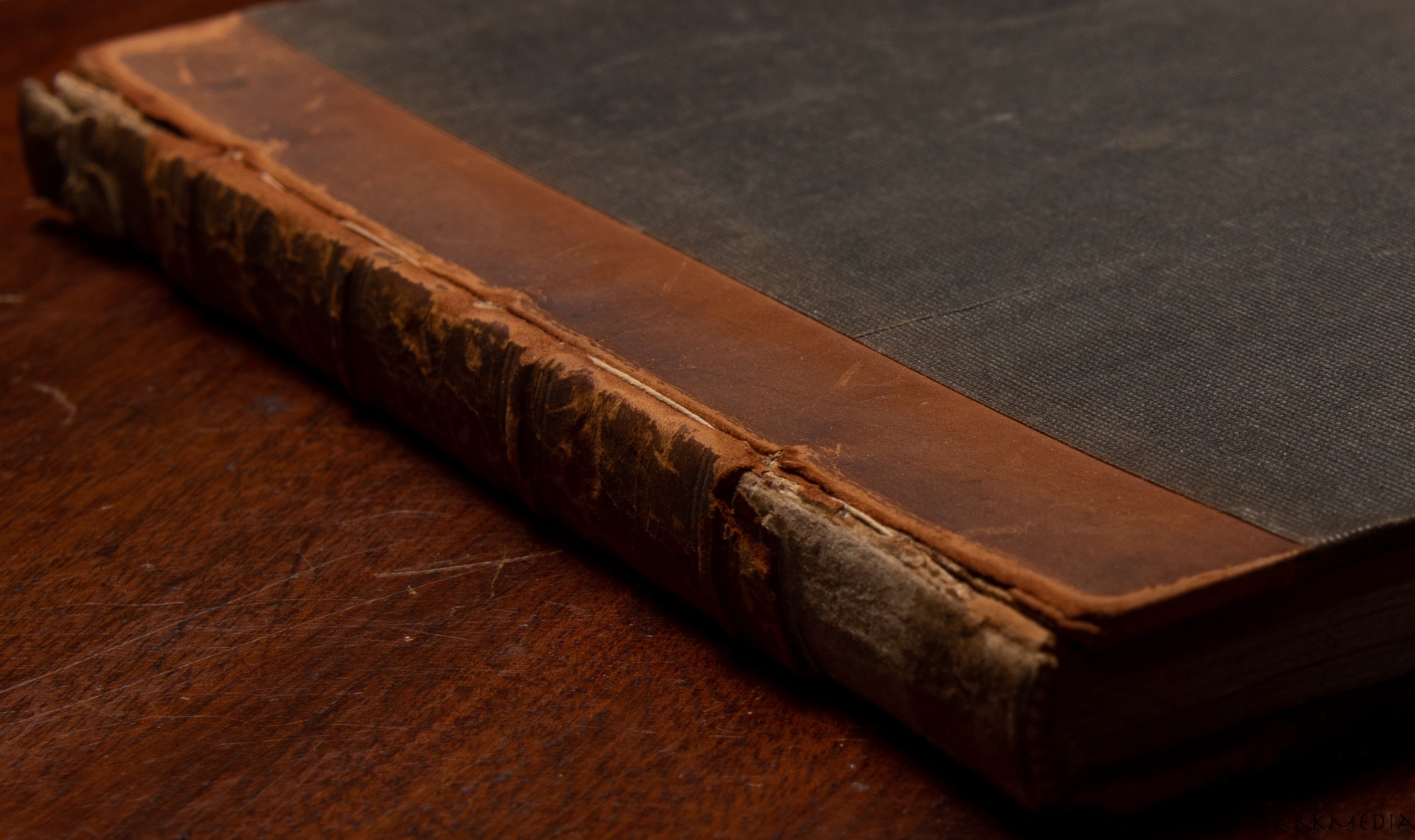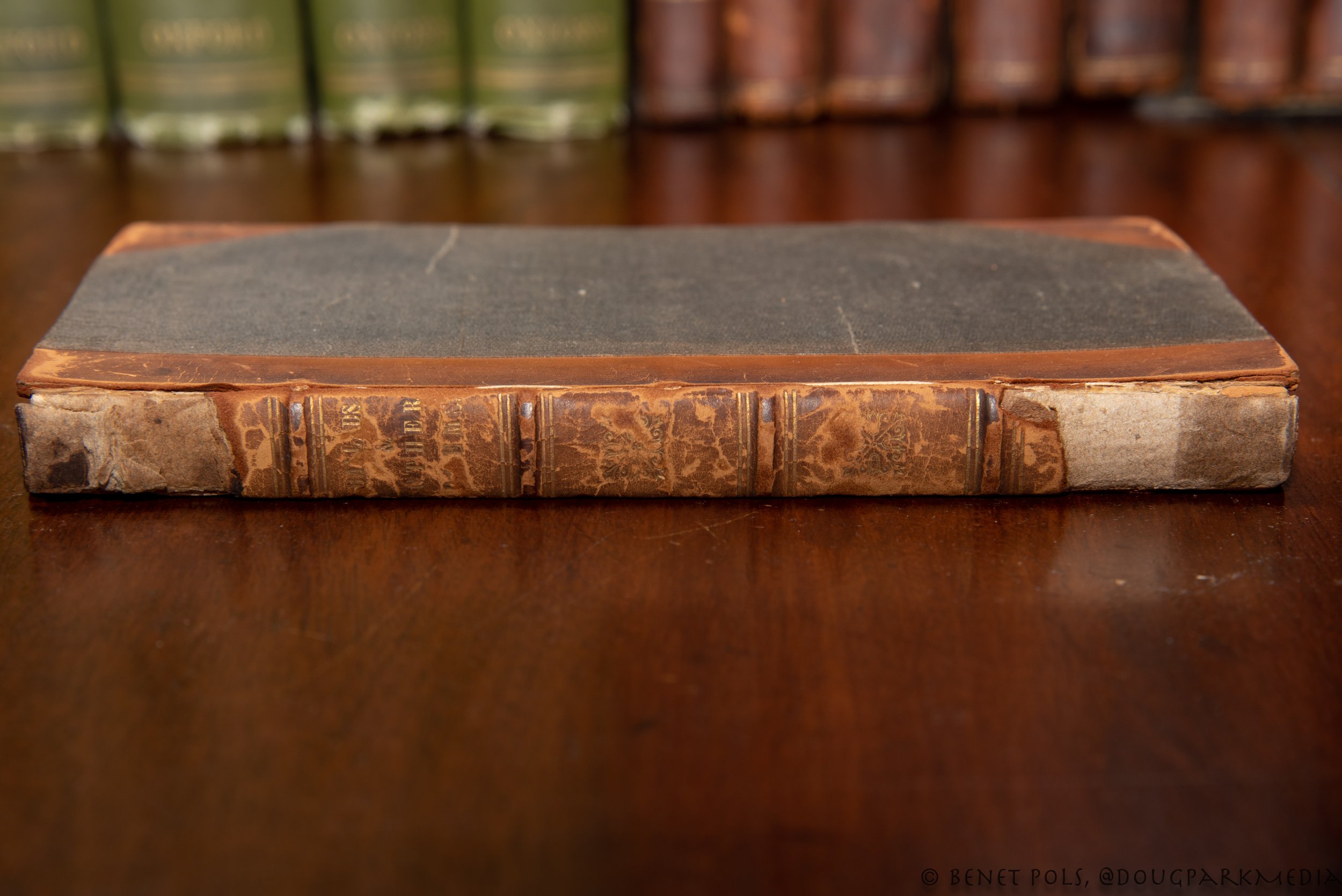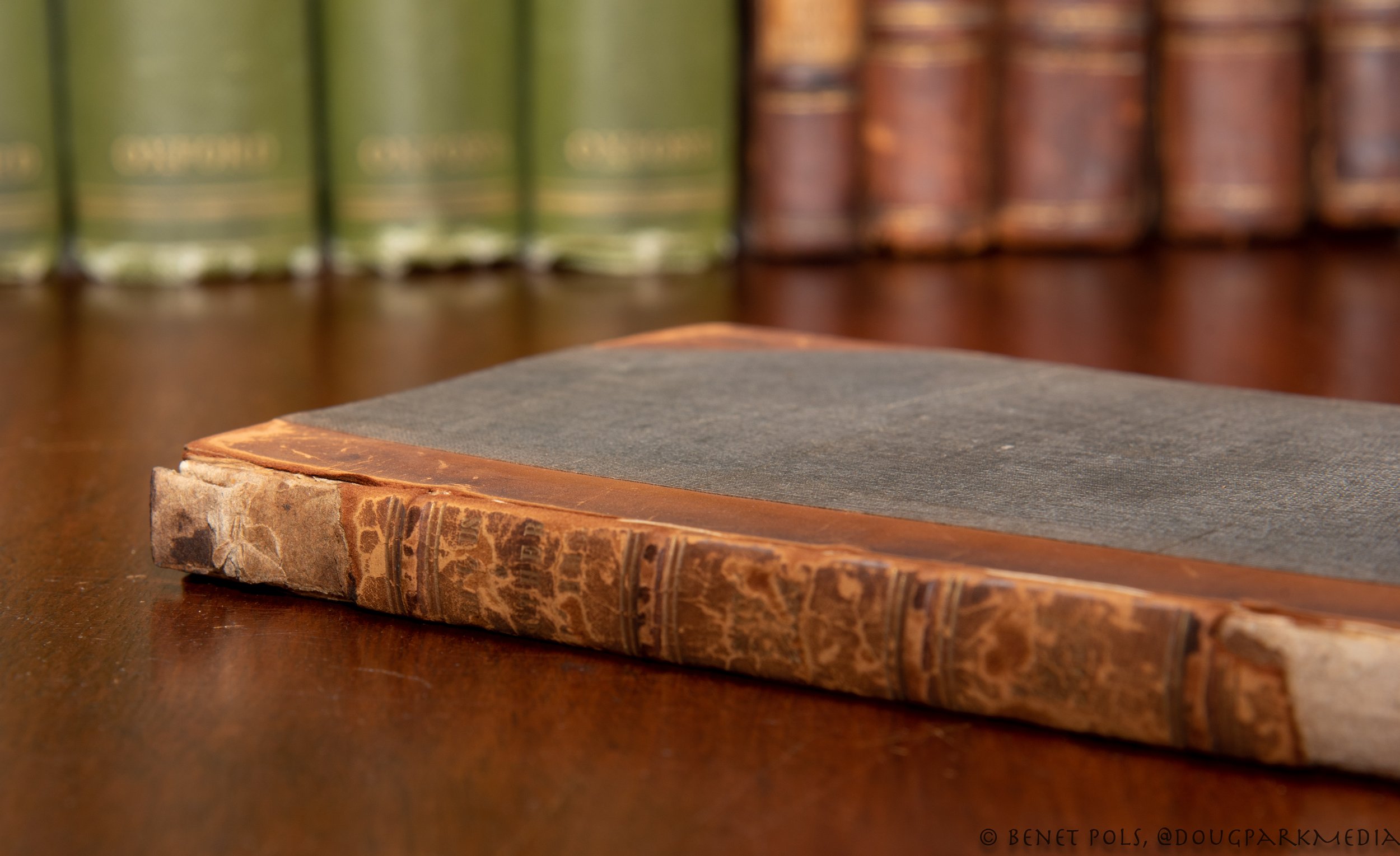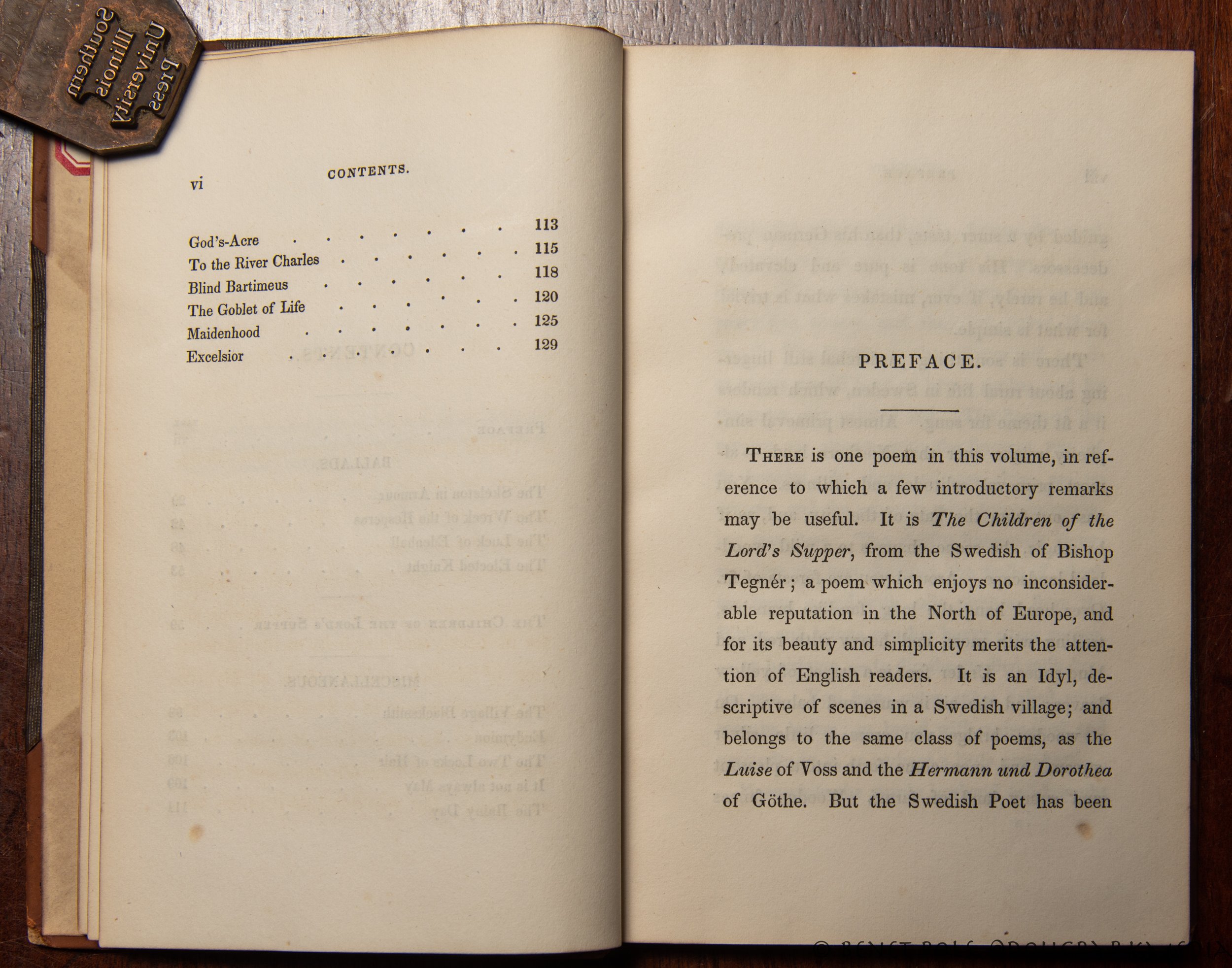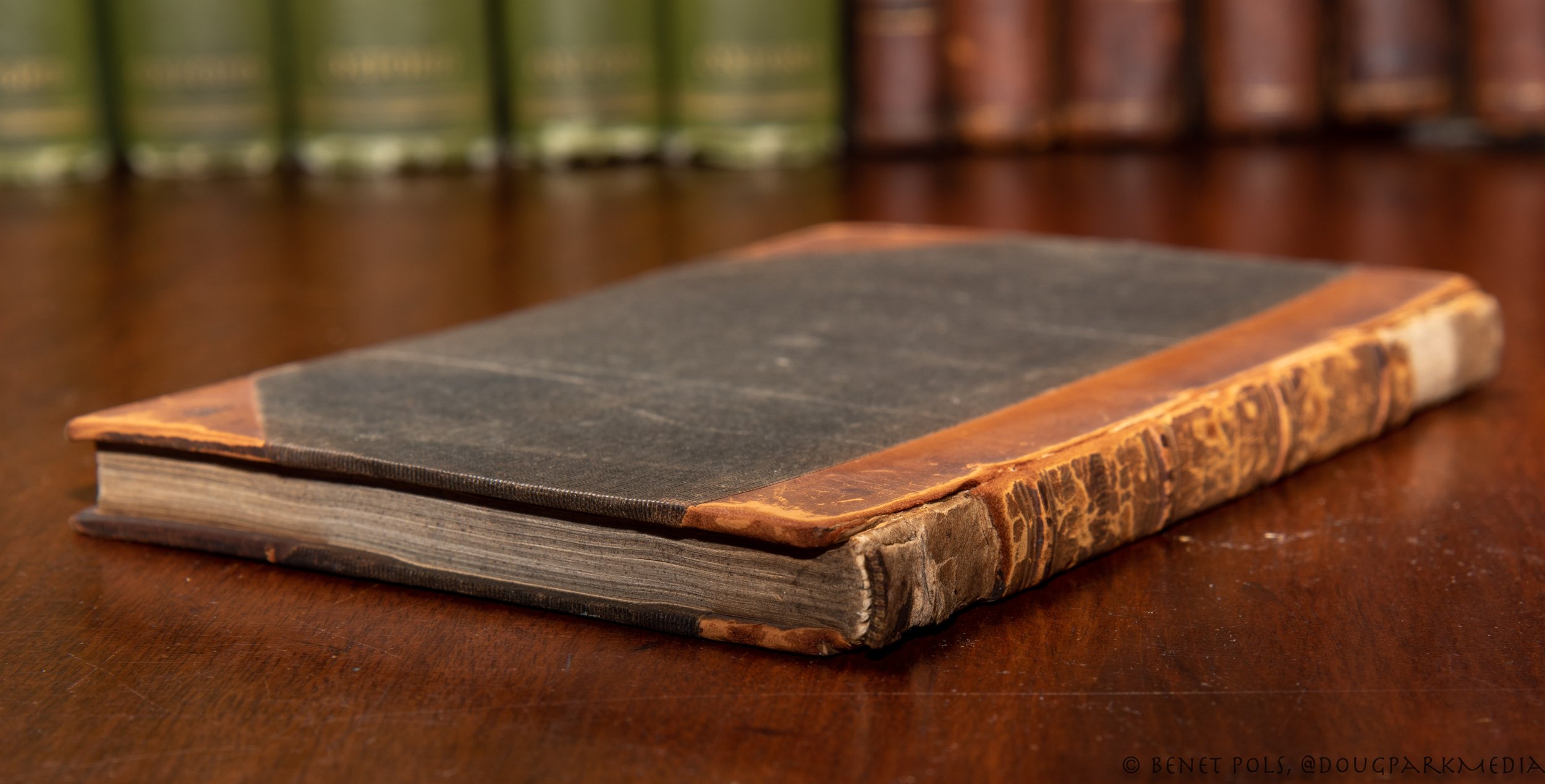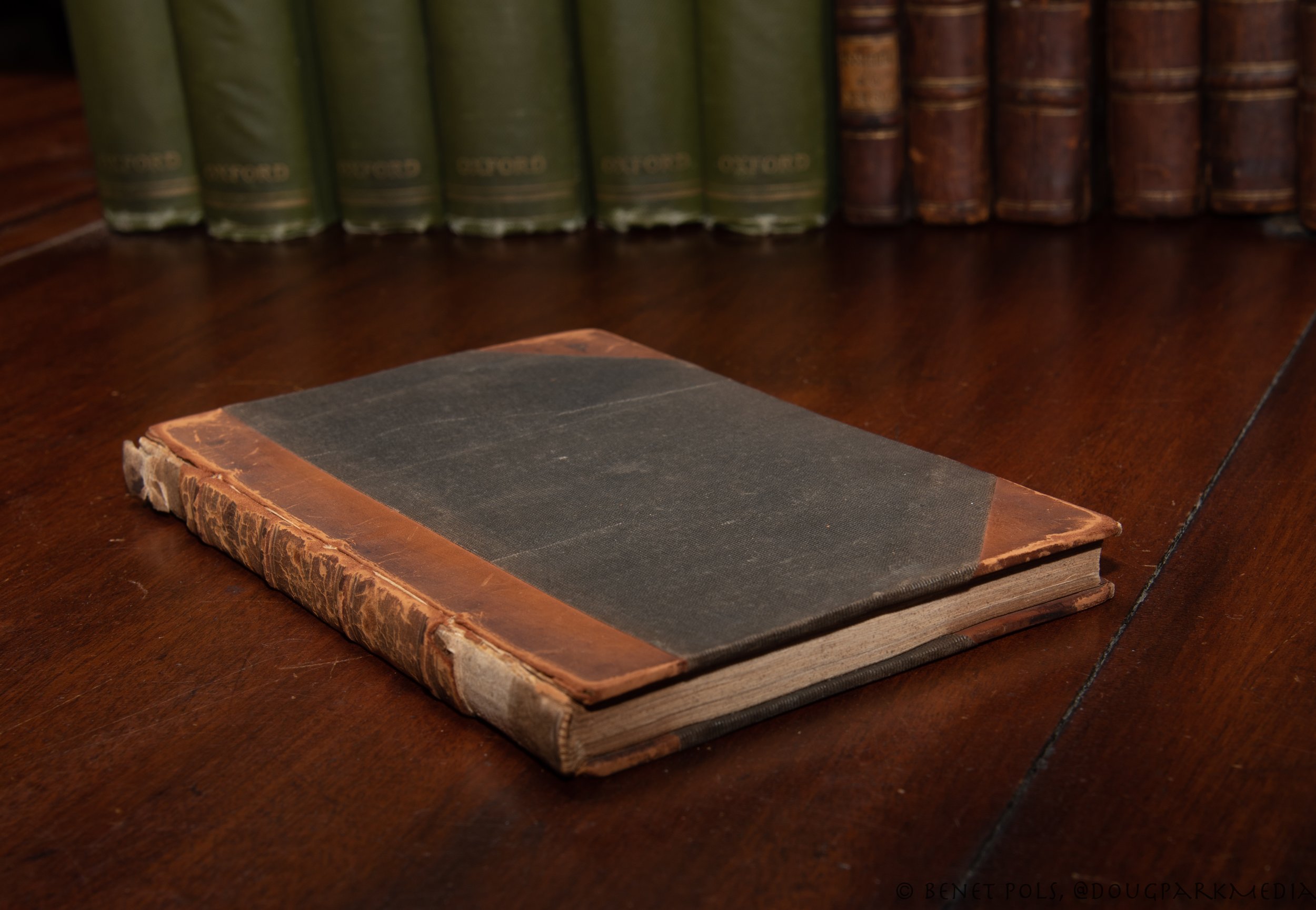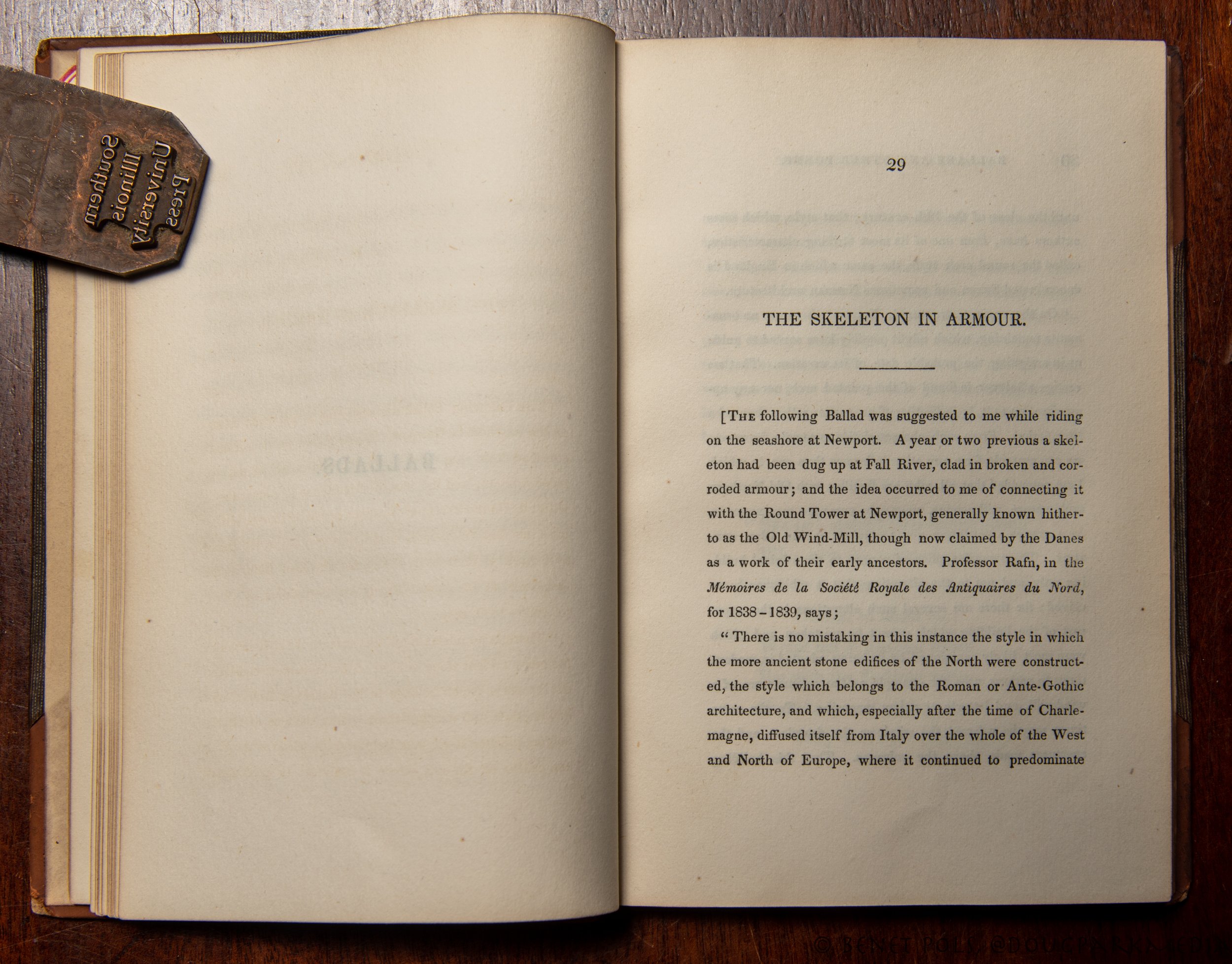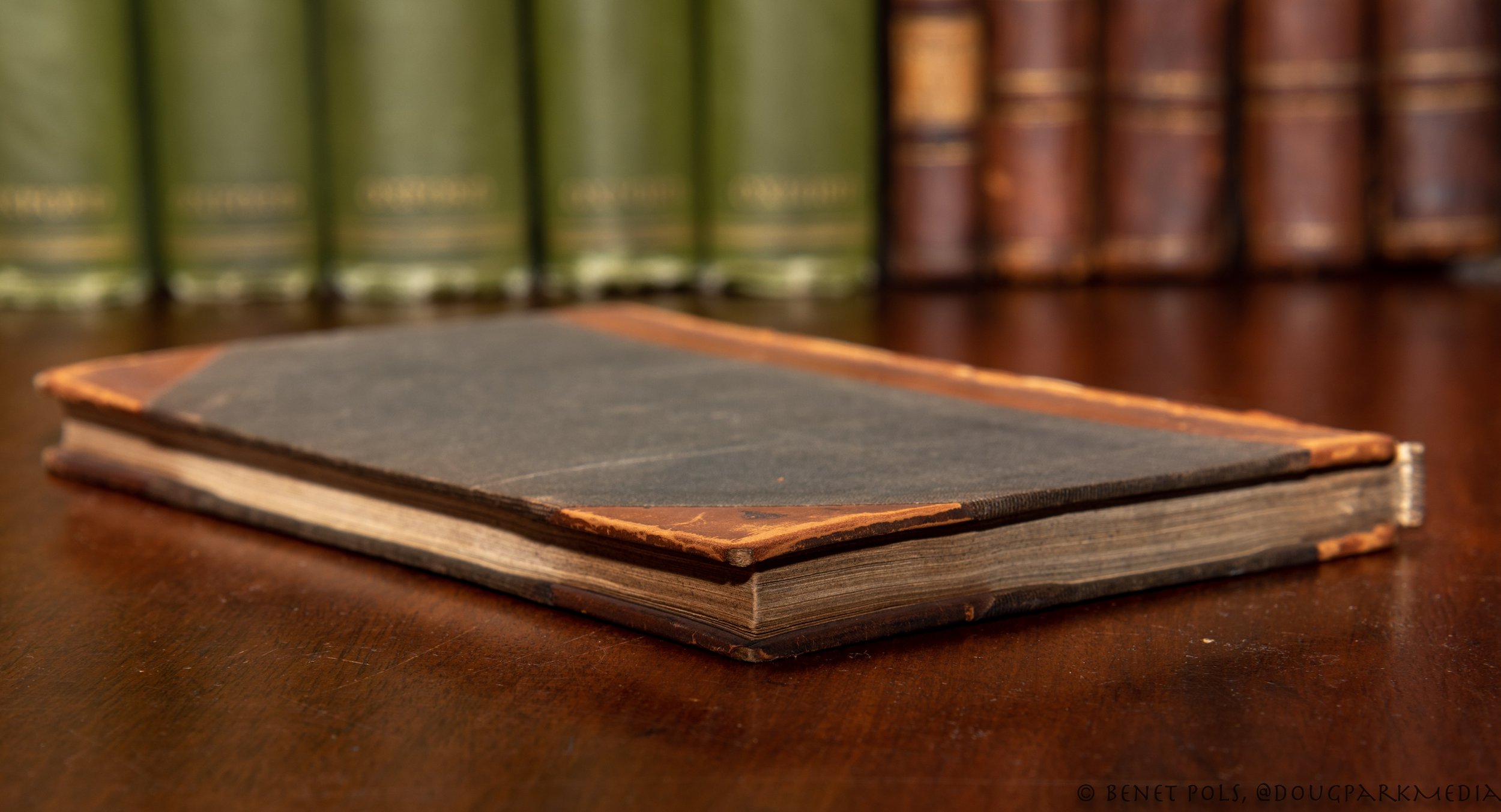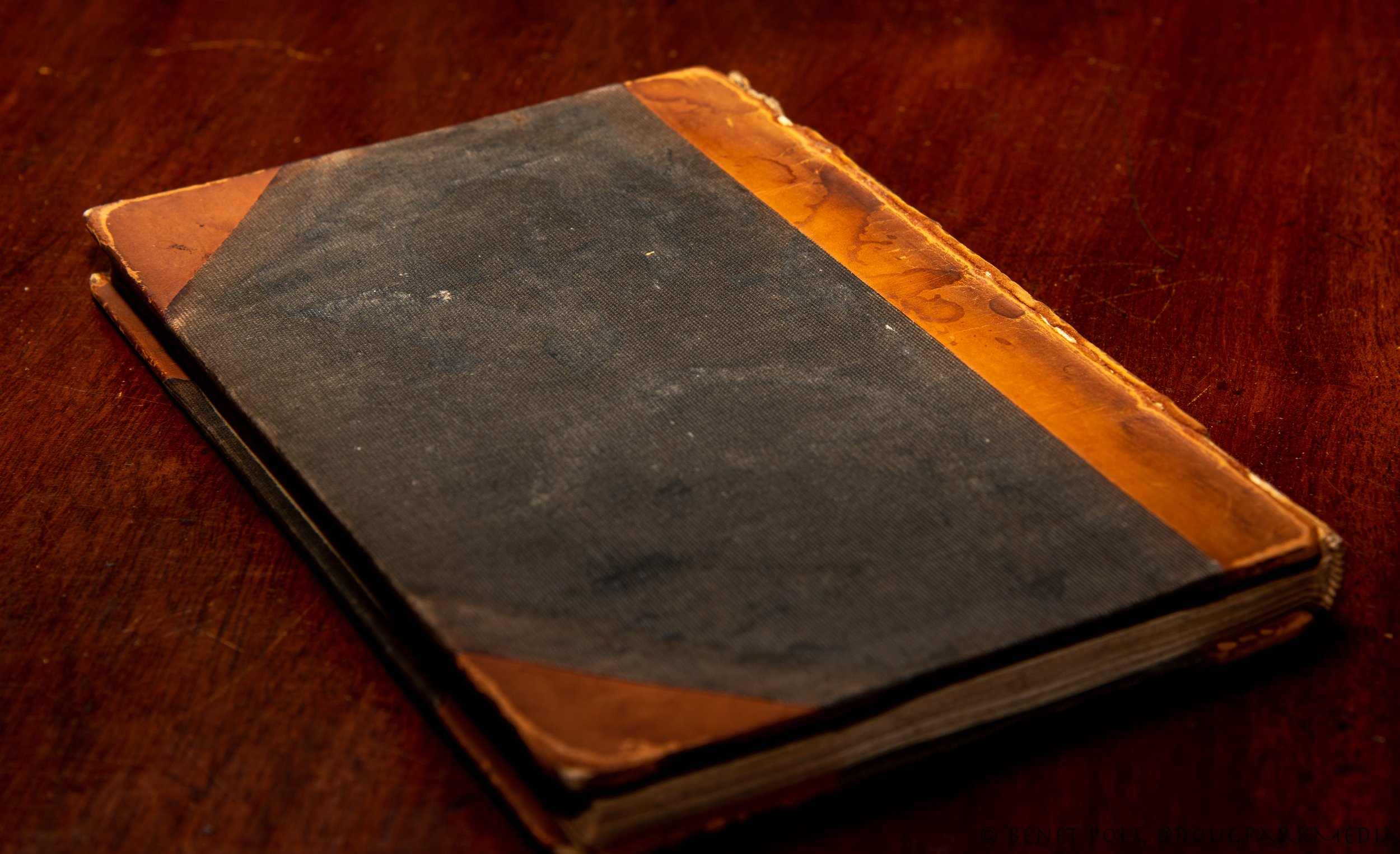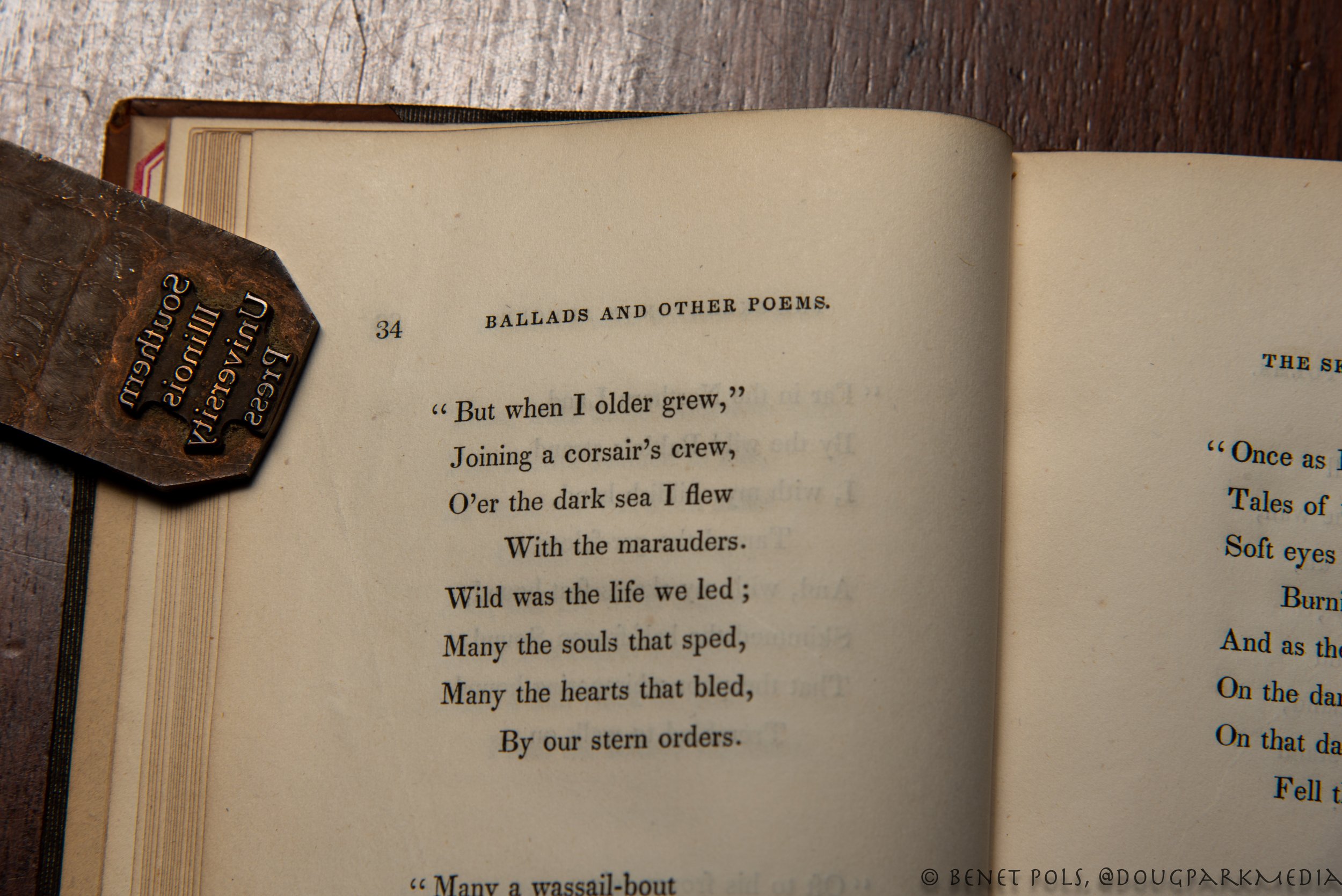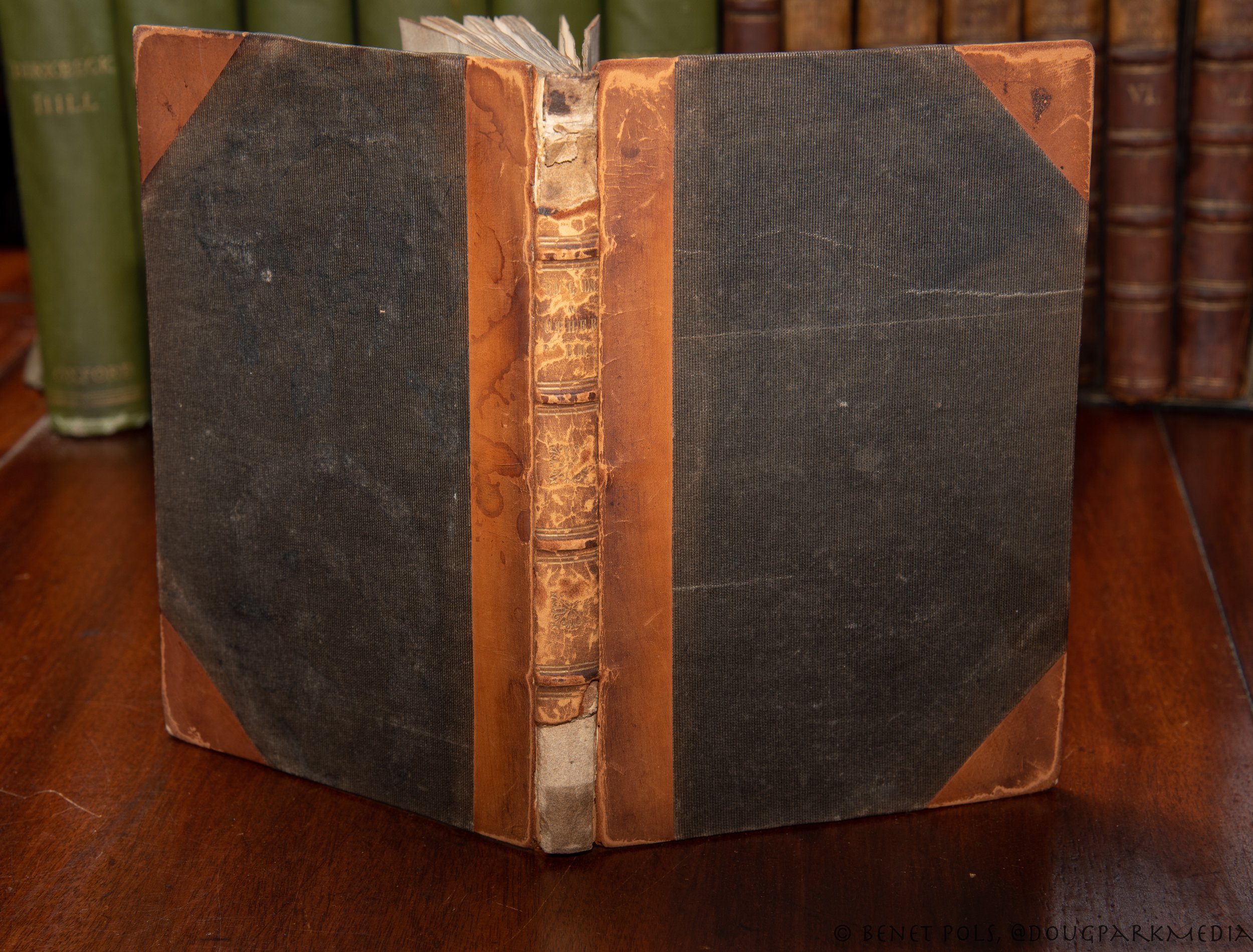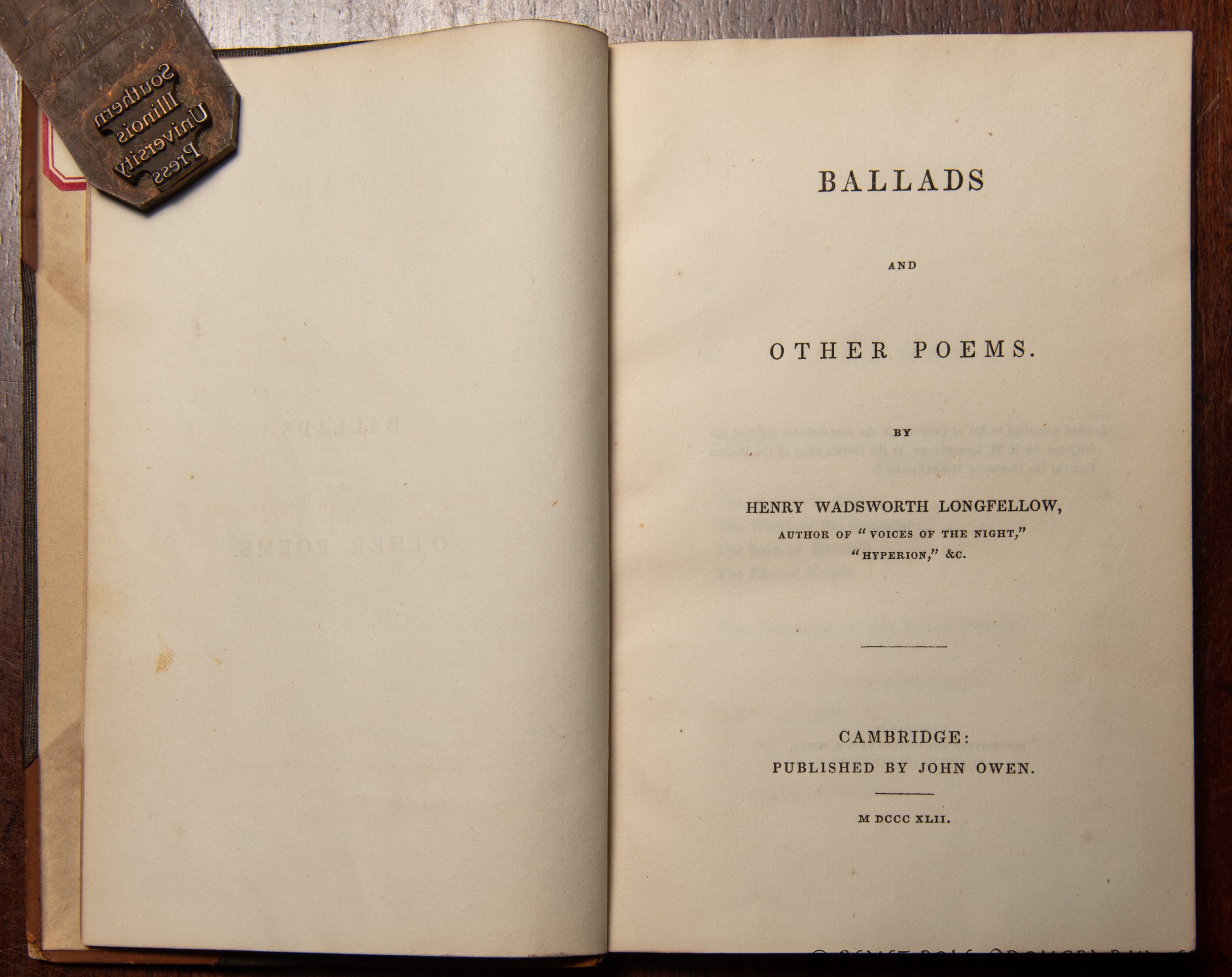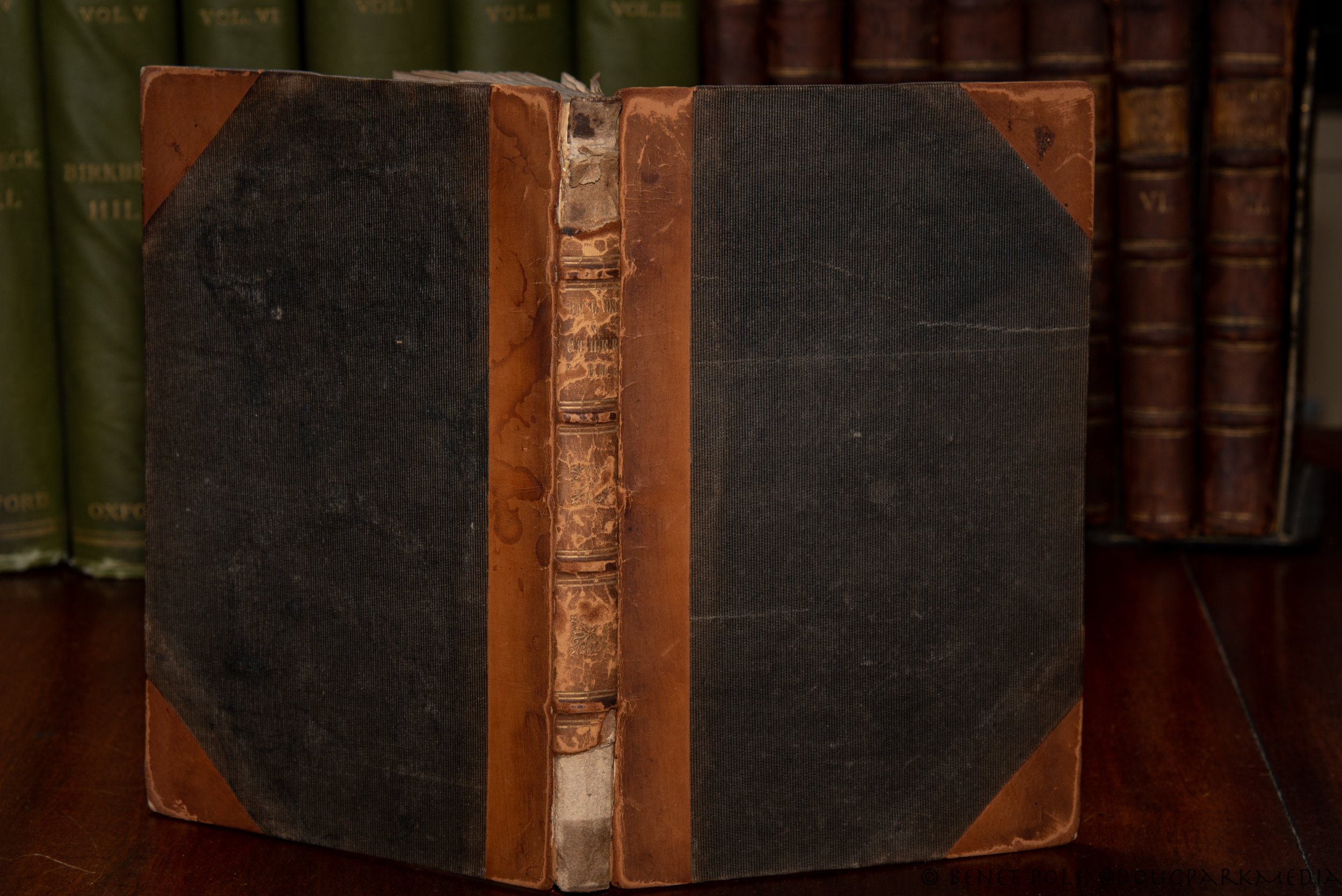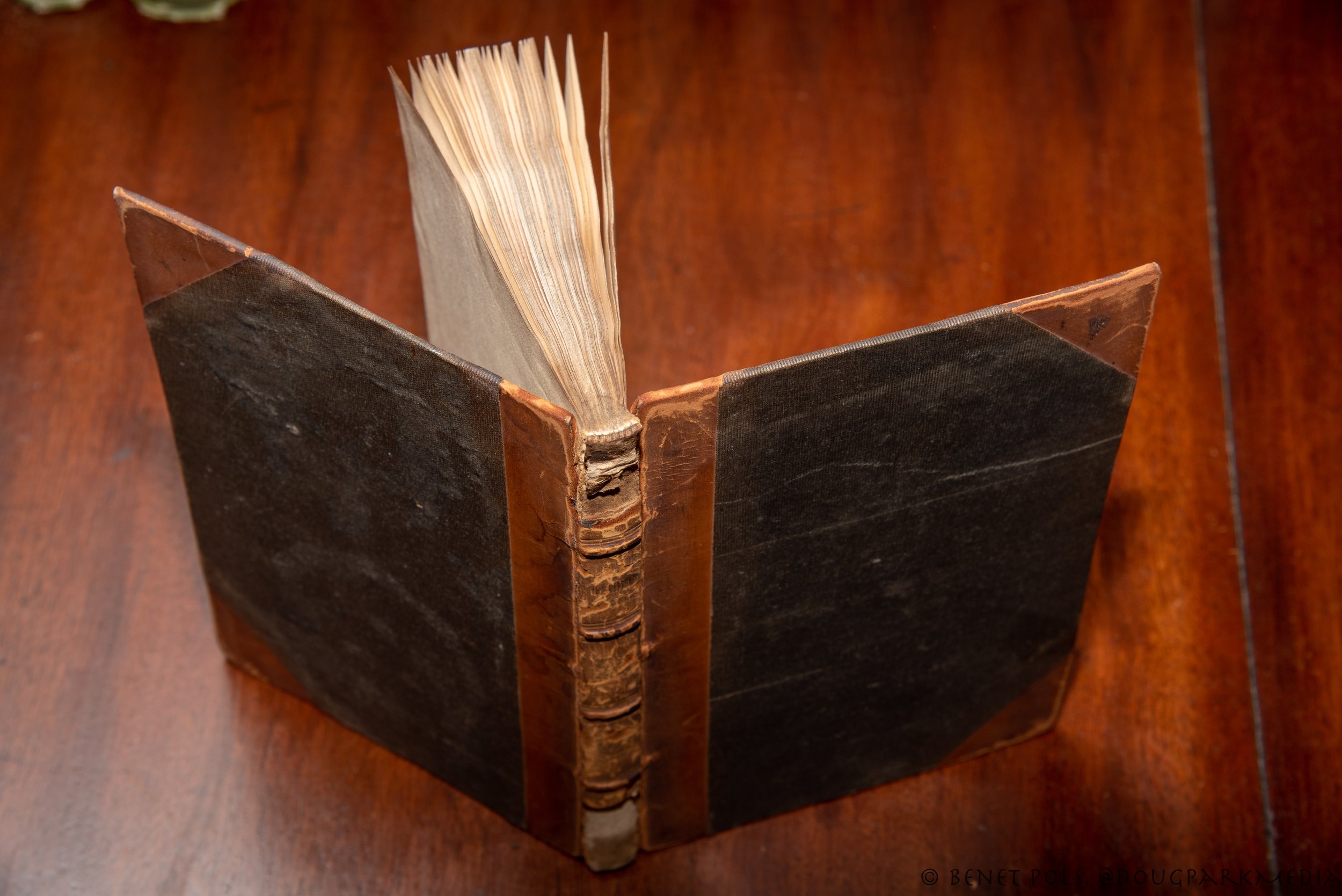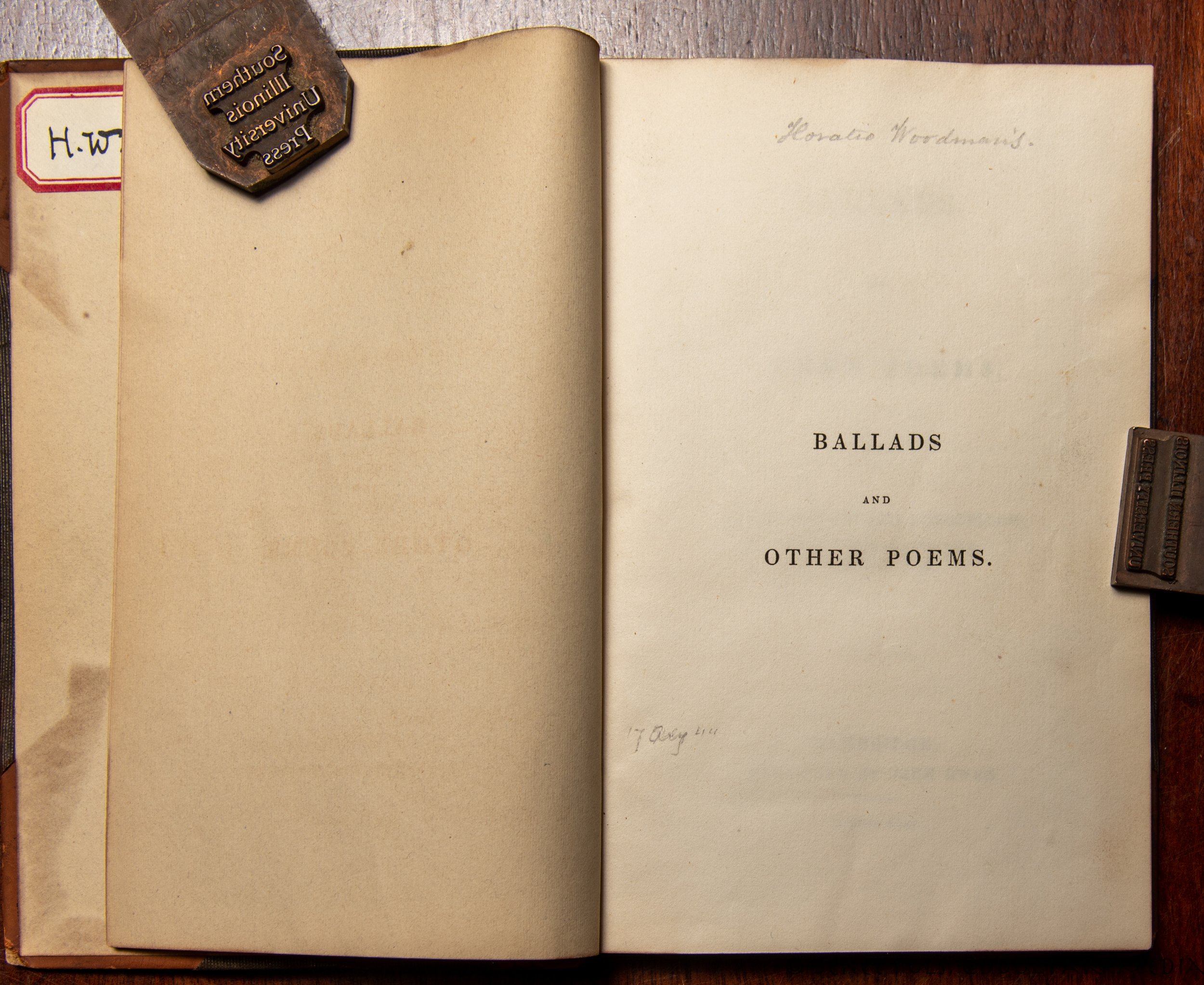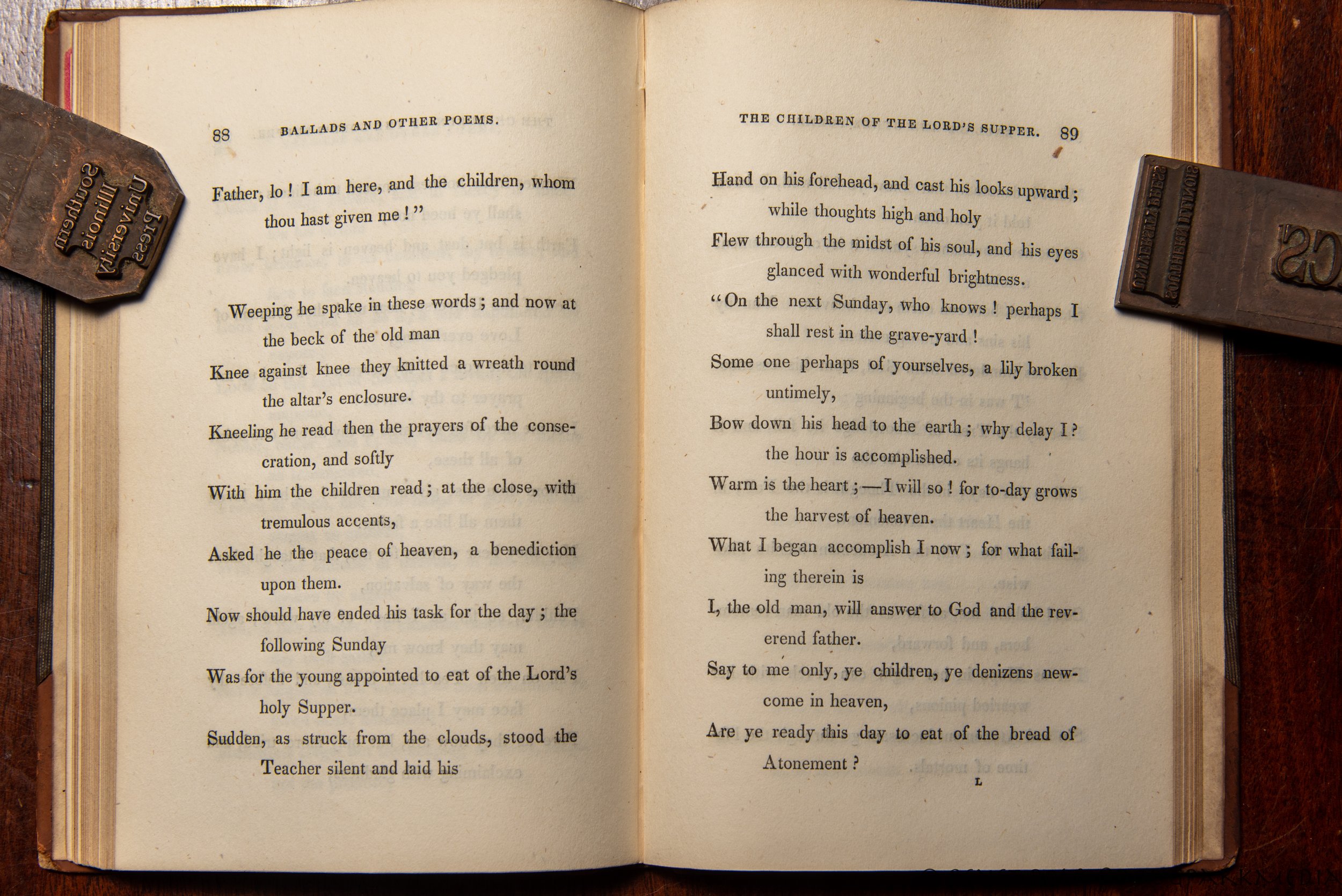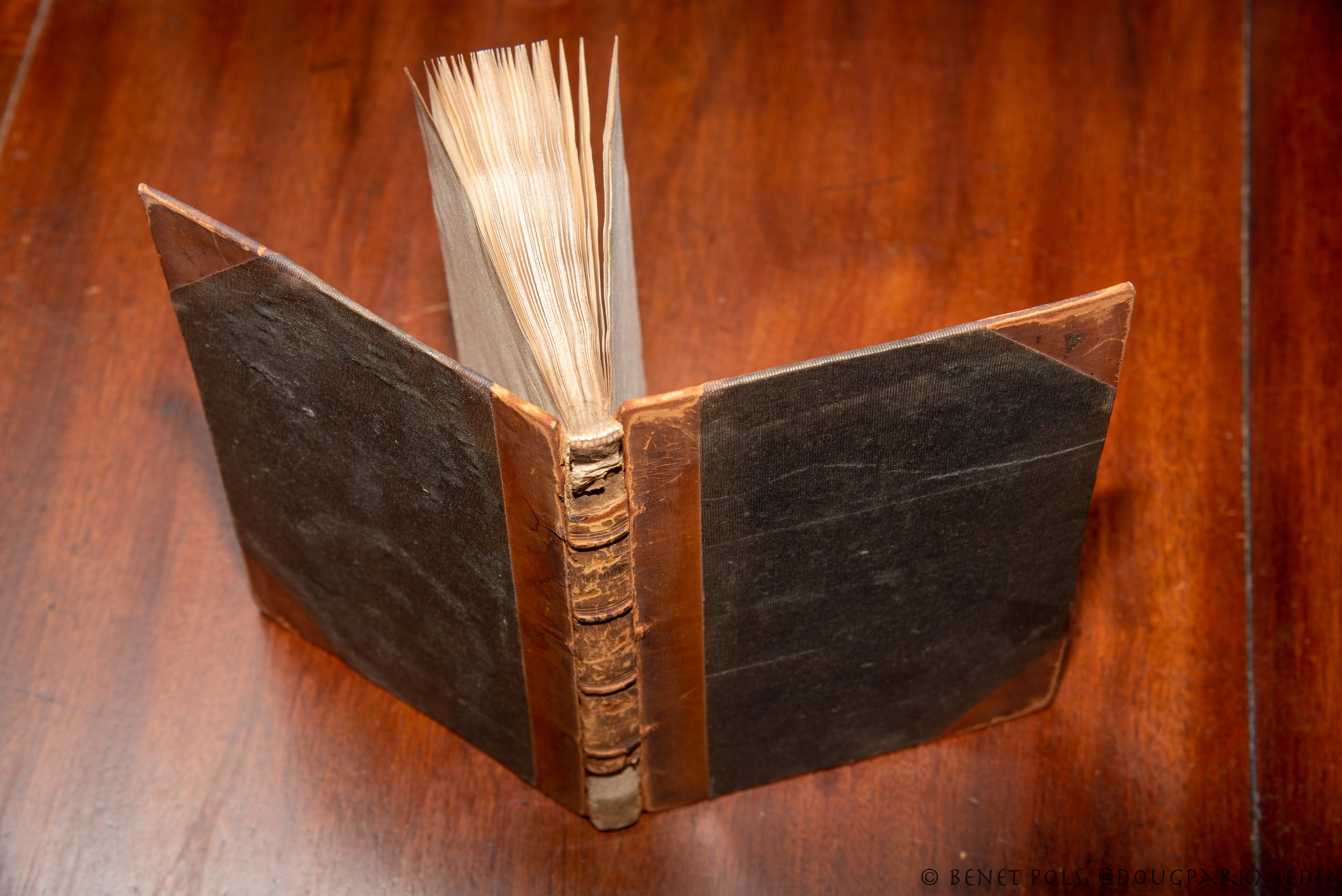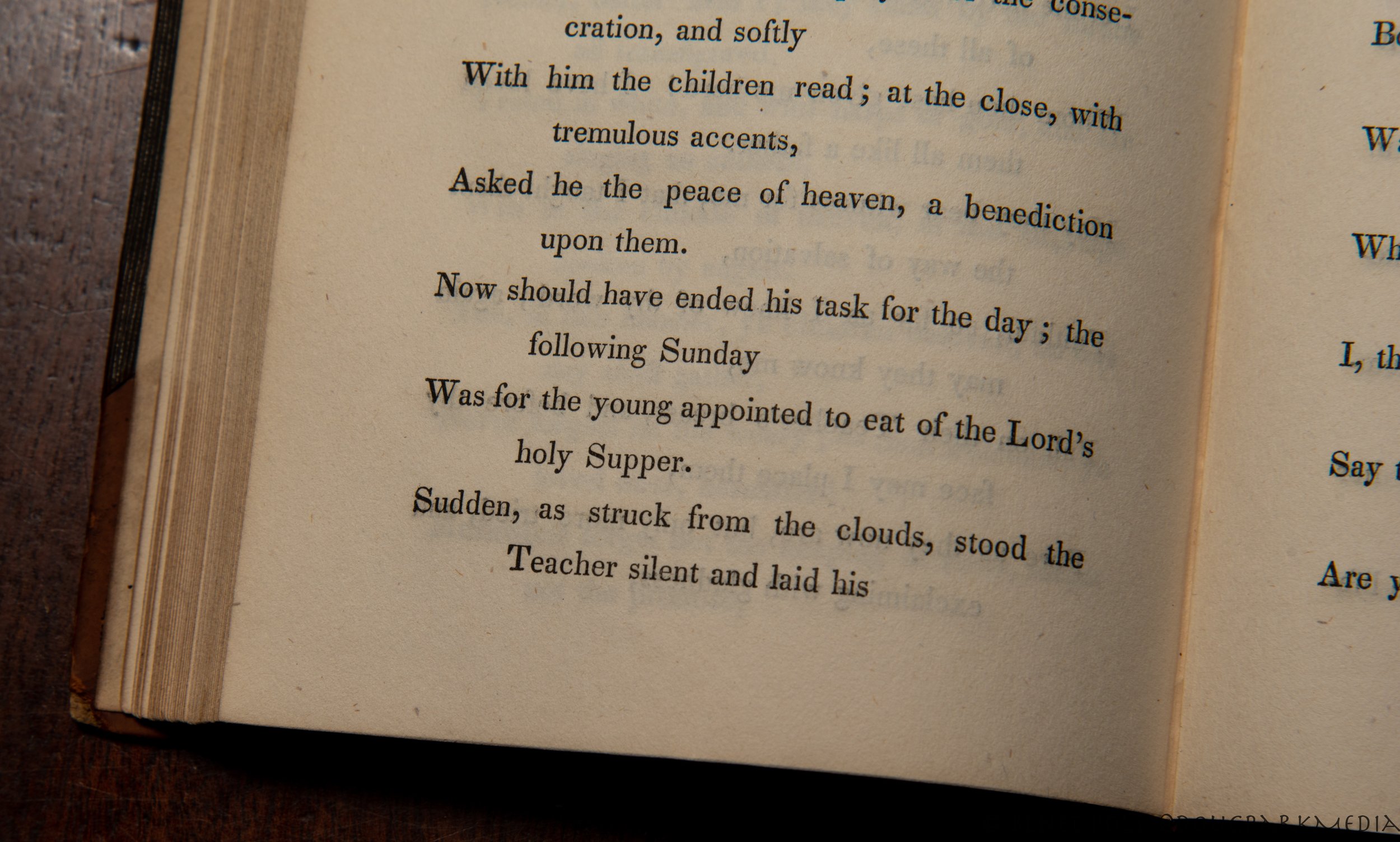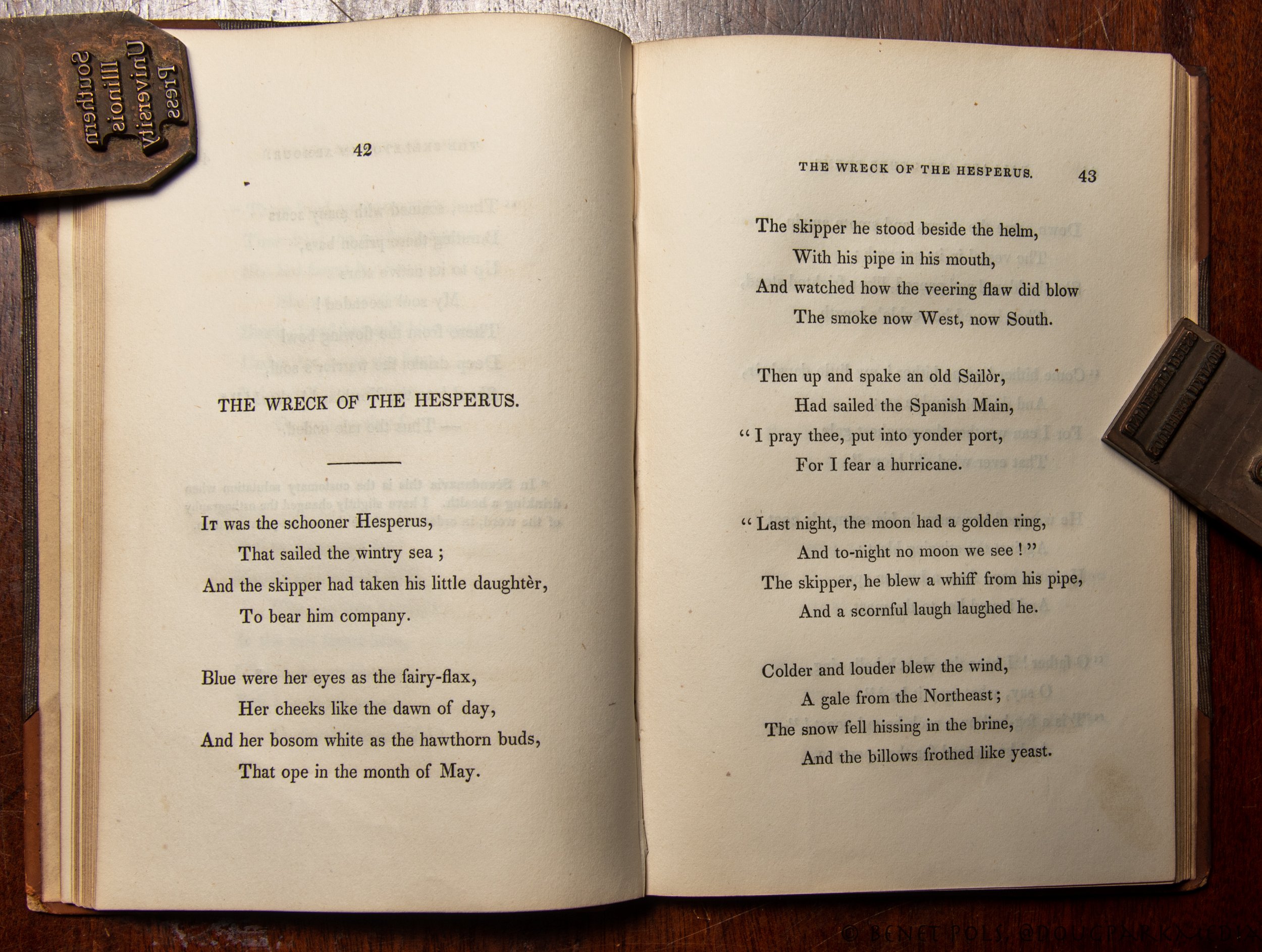Roland Keith Young, nominated for an Oscar for his 1937 performance as Topper, was, like his Topper co-star Cary Grant, an English born American actor with a lengthy film career. It stretched from a 1922 turn as Sherlock Holmes’s Watson until near his 1953 death.
Thomas Mann, renowned for Doctor Faustus and The Magic Mountain, one source of his recognition as the 1929 Nobel laureate for literature, also penned the novella Mario and the Magician, first published in Mann’s native German in 1930 and here translated by Helen Tracy Lowe-Porter for a 1931 first American publication by Knopf.
Young’s bookplate, which can be found in the Cornelia Neltnor Anthony and Frank D. Anthony Book Plate Collection of the West Chicago Public library and seen on line in the Illinois Digitial Archives, is in this 1931 first edition.
This is a rare case when the answer to who owned this book? can be given with a high degree of confidence. Perhaps a case where prior ownership has a greater impact on its current value than its condition. After all, there are ten copies listed for sale on ViaLibri; they range from ten to eighty-eight USD. Only two include seller created images, in my opinion the best driver of price (a story for another day).
In addition to the story within its pages, this copy of Mario and the Magician has a story to tell: the story of who owned it. This makes it worth more than $88, but how much?
Having once owned a first edition of Uncle Tom’s Cabin, I can spend an inordinate amount of my time cataloguing books wondering whose hands the books have passed through. Uncle Tom’s Cabin was first serialized in an anti-slavery newspaper, The National Era, before being published in two volumes by John P. Jewett in 1852. Jewett printed them in editions of 5000 until 295,000 had been sold that first year. My edition was a mixed state. That is Volume I came from the first run of 5000, while Volume II was a “Ten-thousandth,” or in the third printing of 5000.
Who would have been among the first five-thousand Americans to buy Uncle Tom’s Cabin? How would its ownership have influenced their conversation, thoughts, and social lives. But there were no indicia of ownership; the two volumes were just really old. Based on their condition they had been through many hands. Maybe important ones, but maybe just the hands of a guy like me, someone who reads. Their story—outside of their covers—was a general one, not a specific one tied to any particular person.
The Rabbit Hole is an interesting place, around every corner is a possible source of thought provoking information. Why else would I have spent a Saturday night watching Topper on YouTube, wondering about Billie Burke’s career and whatever became of Cary Grant’s wife Dyan Cannon?
One fruitless turn? My effort to learn whether the characters of Mr. Drysdale and Miss Jane from The Beverly Hillbillies were based on bank president Cosmo Topper and his dour secretary Miss Johnson as portrayed by Virginia Sale. Four peas in two pods they were, right down to the matching brush mustaches and forbidding hairstyles.
But the Rabbit Hole encourages procrastination. It’s a place where the perfect is often the enemy of the good. A first edition of Longfellow’s 1842 Ballads and Other Poems ought to sell itself. The Wreck of the Hesperus, and The Village Blacksmith appeared in book form first between these boards. It appears unique, none like it is available on-line.
And this one won’t be listed either. At least not until the mystery of Horatio Woodman, whose name appears in pencil on the first free leaf, takes better shape. A Horatio Woodman kick-started Boston’s Saturday Club which begat the Atlantic Monthly. Longfellow was a member too. Woodman and Longfellow were both Mainers. Me too, so I am in no rush.
